at the Oregon Shakespeare Festival

by William Shakespeare
The consistently inept directing of Shakespeare at the Oregon Shakespeare Festival is inexcusable. Artistic Director Bill Rauch is brilliant in his own handling of Shakespeare and is visionary about many, many aspects of the festival. But, his chronic hiring of weak, inexperienced directors for Shakespeare is pissing me off.
The outdoor theater looked less than half full when we saw Henry. Get a clue, Bill. This mishmash lump of time-consuming theater is not worthy of OSF, most colleges, and many high schools. The acting company was very good to excellent, but all of the thematic decisions and technical crafts were artless. People don’t want to pay in money or time to see substandard, poorly executed theater.
Director Lisa Peterson completely failed in creating a space and time where a story could be told.
We listened to the director talk about the production in a podcast as we drove to Ashland. At one point Peterson half coyly tells us that she really didn’t have a concept for the production.
What an understatement. No concept and no skill made the evening not so much fun.
The true felonious horror of the night was the thrift-store collage of crap costumes credited to designer David Woolard. They were beyond hideous. You got tired of laughing at the bad choices as each new scene brought more mismatched, pointless weirdness on stage. It wasn’t as if good guys (the loyalists?) more modern dress while bad guys (the rebels) wore Shakespearean garb. No. It was a complete hot mess where tie-dye t-shirts, 16th Century robes, modern military uniforms, and western-movie gun holsters were randomly distributed throughout the cast in the same scene. The disorder was pointless and truly distracting as the attention-getting clothes seem to be trying to communicating SOMETHING. But their groans were inarticulate autistic noise that communicated nothing.
Rumor (Rodney Gardiner*) leads off the evening’s disorder by appearing in modern jeans and a Rolling Stones tongue t-shirt. He spoke in a kind of Southern jive and gave us lots of tongue action. Fine, except the next characters we see use different dress and different accents, even among themselves.
None of the characters seemed to have met each other before they appear on stage. Their accents were Southern, British, and/or American English without rhyme or reason.
The set was extravagantly wrapped in construction steel by designer Rachel Hauck. But, all the money used to create a framework around the stage and a large center stairway was spent without reason. The steelworks did nothing artistically, and the stairway was used ineffectively except for one brief scene.
There were some good moments of acting and one good artistic note.
Unfortunately, the best moment of the play comes before it opens. As the lights come up, the cast does a 60-second recap of Henry IV, Part I to catch the audience up on what happened in the last episode. That was a cute device that brought us into the evening. Also unfortunately, after the Shakespeare ended, the cast came back on stage and gave us a 60-second discordant, mood-destroying trailer for the next play in the history series, Henry V, which will be performed next year. This epilogue was jarring, inappropriate, unneeded, and wrecked whatever dramatic climax the play had offered. Lame.
The actors were ill served by Peterson’s direction. The best among them could manage a captivating scene or two, but there was no flow and no chance for character development. The deathbed scene with Price Hal (Jonathan Tufts) and old Henry IV (Richard Howard) had depth. The dottering old connivers Justice Shallow (James Edmondson) and Silence (Michael J. Hume) gave good comic relief. Doll Tearsheet’s (Nell Geisslinger*’s) breasts that threatened to malfunction the wardrobe were watchable.
Falstaff (Michael Winters*) was competent enough so that this was clearly his play, much in the same way that last year’s Part I belonged to Hotspur. I enjoyed musing over this traditional focus for Parts I & II, and remembering how in the last OSF run of the three-play series Dan Donohue owned each of the plays as Prince Hal/Henry V.
Other lords and bawds were good and talented, too.
But, in this Part II the actors didn’t have a chance to create a special identity. Shakespeare’s story didn’t have a chance. The choice of directors lost this battle before anyone with talent had a chance at creating art.
Ozdachs Rating: ![]()
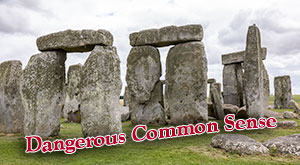
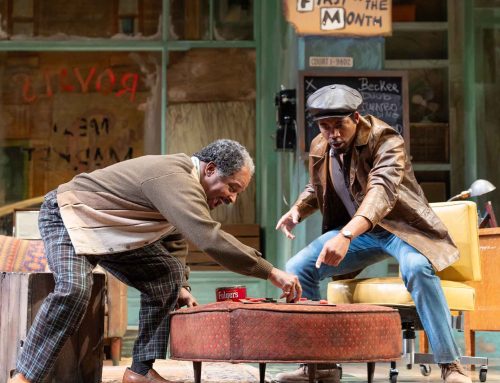
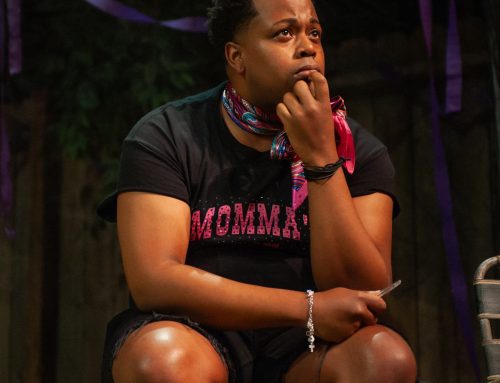
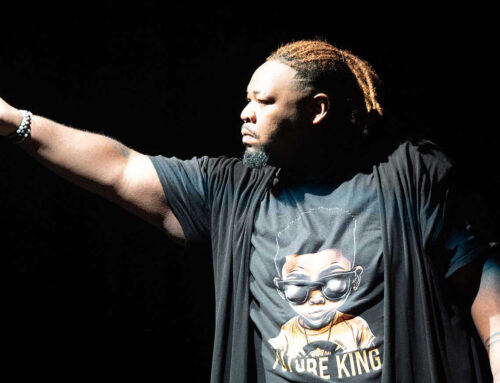
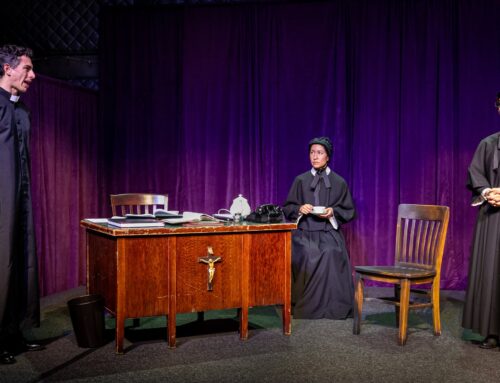
Leave A Comment